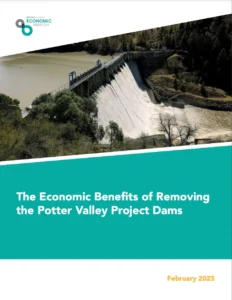2021 Salmon Run Recap: Warm Water Spelled Trouble for Migrating Fish
In 2021, Idaho’s salmon and steelhead returns continued to follow the declining population trends of the last few years, resulting in another year of very low abundance.
Click here for wild salmon and steelhead return numbers.
This year, it was hot in-river conditions that posed the greatest threat to migrating adult salmon due to an extreme heatwave that encompassed most of the West. River temperatures in the stagnant reservoirs along the Columbia-Snake rivers exceeded the 68°F safety threshold for salmon for weeks on end this summer, sometimes getting as hot as 74°F.
Due to their late summer migrations, Idaho’s Sockeye and steelhead were hit the hardest by the persistent hot temperatures in the river. NOAA Fisheries estimated that just 30% of Snake River sockeye survived the upstream trip through the hydrosystem from Bonneville dam to Lower Granite dam. Idaho Fish and Game was forced to trap and haul sockeye survivors from Lower Granite to their Eagle hatchery, totaling just 185 salmon. Only 4 natural sockeye completed their entire journey back to Redfish Lake this year. What was once a run 20,000 fish strong can now be counted using one’s fingers most years.
The early portions of Idaho’s steelhead run were similarly dismal, mirroring steelhead returns across the Columbia Basin. Fisheries up and down the Columbia-Snake River were either closed or severely curtailed in response to some of the lowest returns on record. Aided by cooler river temperatures in the fall, Idaho’s Snake River steelhead bounced back with a somewhat larger return in the fall, and will likely end up with a total count similar to recent years after the spring portion of the run. While the return did improve, the total return of 10,000 wild steelhead is less than 10 percent of what a harvestable, abundant population would look like.
Spring-summer Chinook counts over Lower Granite Dam increased from last year to around 35,000 fish, with wild fish likely to make up around 20% of that number. This increase was touted as a strong sign of population recovery by many who would rather maintain the status quo hydrosystem. However, prior to the Lower Snake River dams (LSRD), wild spring-summer Chinook numbers were upwards of 130,000 – a strong counter to that argument. The ten-year wild average for this population is just 14,000 fish. Returns have not even cracked 10,000 wild returning adults since 2016, a far cry from historic numbers.
Idaho’s wild salmon and steelhead are clearly in trouble, as 2021 was another year of low numbers of returning salmon. The most worrying statistic is the SAR (smolt-to-adult return ratio) for wild spring-summer Chinook and steelhead. In order to recover Idaho’s wild salmon, SARs must be in the 2-6% range, averaging 4%. For wild Chinook, SARs have averaged 0.7% since 2010, or 0.7 adult fish returning for every 100 out-migrating juvenile fish. For wild steelhead, the average since 2010 is 1.5%. Both numbers indicate populations trending toward extinction. At these numbers, the only recovery action at the disposal of fishery managers that will achieve necessary SARs is river restoration via breaching the LSRD’s.


